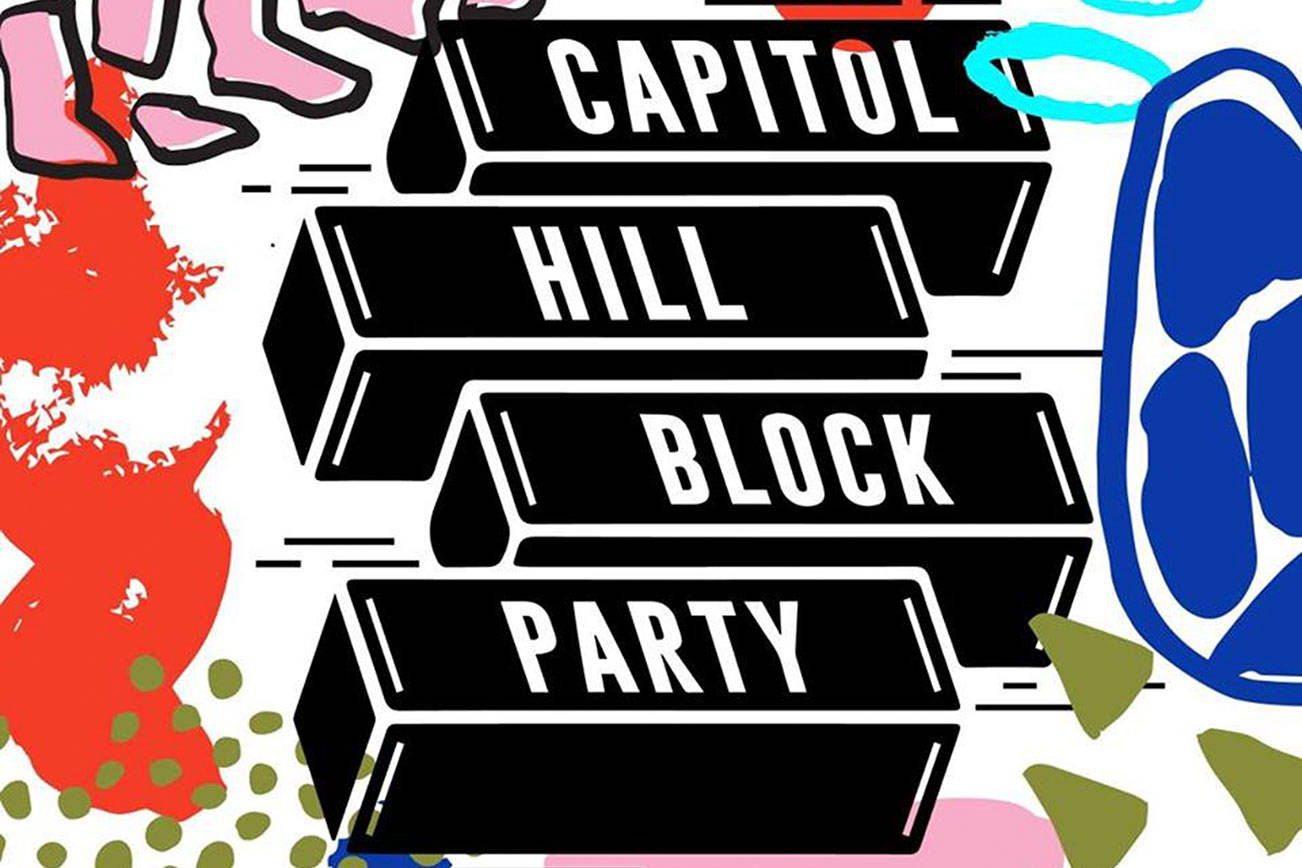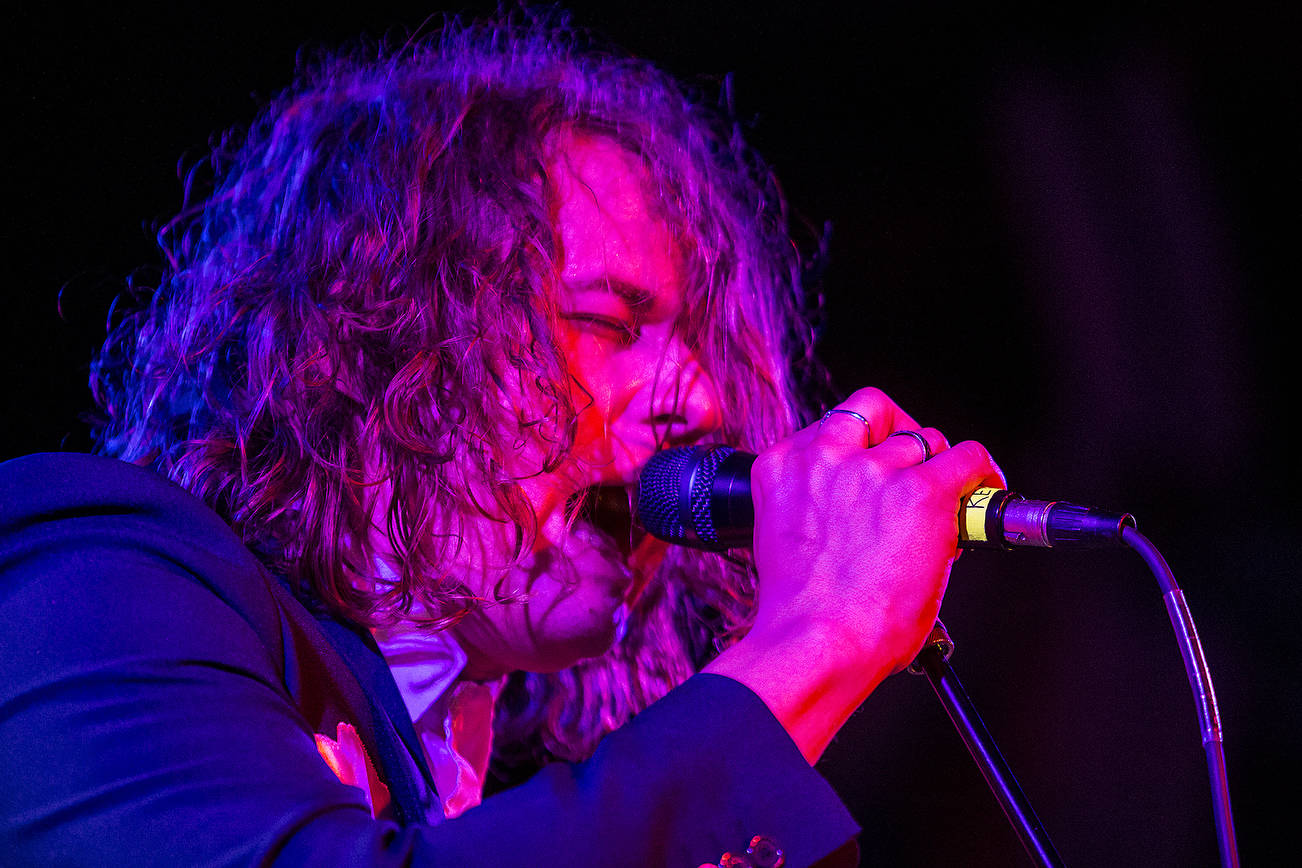If history is any guide, when party rappers Mad Rad celebrate the release of their second album, The Youth Die Young, at Neumos on Friday, the night will look something like this: The 700-plus-capacity club will be sold out or very near; it will be extremely sweaty; there will be onstage shenanigans aplenty (with an emphasis on speaker-climbing, stage-diving, and turntable-surfing); and, according to MC Buffalo Madonna, most people will be “too shit-faced” to find their wallets and pick up the new record.
This is the bliss that is being Mad Rad, and also the curse. The mere mention of a show practically assures a line around the corner on gig night—especially if it happens to be at one of the venues that had previously banned them (as Neumos did)—and the ever-lucrative bar will be the only place busier than the dance floor. From this great gift, however, has emerged the central paradox of Mad Rad’s career: Their studio recordings have simply taken a backseat to their raucous live displays.
Mad Rad’s fan base—hard-partying concertgoers who unabashedly embrace in-the-moment debauchery over the more substantive commentary offered by many of their contemporaries—seems more willing to pony up for a wild time at one of their shows than to pick up a copy of the band’s recordings. While the band’s sales numbers have not been terrible for a local group (they estimate they’ve moved somewhere around 800 hard copies of their debut, White Gold), they’ve never lived up to the monstrous buzz their live shows have commanded.
Mad Rad would, however, like to believe this will change with The Youth Die Young. “Our entire lives are invested into this album and this music,” says Nate Quiroga—better known as the wily, speaker-climbing MC Buffalo Madonna. “I very much believe that this album has the legs to take us, and it’s all about having people fuckin’ support it.”
Though they released a full-length, White Gold, in June 2009, Mad Rad have been known more as troublemakers who make music on the side—a reputation solidified by a June 17, 2009 cover story in Seattle Weekly by Jonathan Cunningham that chronicled a string of incidents that got them banned on the Hill. However, Quiroga says he’s confident their new product will change more than a few minds in the press, and, he hopes, even turn avid showgoers into fans of their studio work. “People still think we’re two years ago, like they’re hearin’ our music two years ago,” he says. “They’re not hearing this [new] shit.”
Despite the band’s musical progression, the record industry has remained uninterested in matters like distribution beyond the city limits, financial backing, and promotion for a substantial tour. Throughout the process of recording The Youth Die Young, record labels that initially showed interest have decided, at least for now, not to pursue the project. The reasons for this perplex their former manager, Kerri Harrop, whom Mad Rad mysteriously let go at a time when if anything, she says, the group was starting to pique quite a bit of industry interest.
“In their own words, they wanted to ‘take it a little more grimy,”’ says Harrop of the group. “They’re good dudes, and we’re all still friends, but to be honest, it’s a little puzzling to me.”
During Harrop and Mad Rad’s year-long association, the two parties worked together to reshape the group’s image—from a band of destructive troublemakers to a more fun-loving gang of scenesters. Thanks mainly to Harrop’s negotiations, they even regained access to venues they’d been barred from. It was at this point that the group decided they wanted to take back the reins.
“We did a lot of just sitting back, ‘let her handle it,'” says Gregory Smith, the man behind the beard and the moniker MC Terry Radjaw. “It made us lazy.”
Harrop stresses that fans’ initial excitement at live shows was sometimes followed by a letdown with their early recordings: “You can’t have a great live show and a record that’s just at a middle-y level.” Although she believes the new album has more than enough merit to stand on its own, Harrop explains that there might be some leftover skepticism. “Will people buy the record just based on the strength that it’s a Mad Rad record? No, not if they haven’t seen and experienced that live show,” she says. “There’s a curiosity element, but it’s the live show that sells those recordings.”
Mad Rad’s put quite a bit more effort into packaging this time, and hopes that The Youth Die Young‘s sales will get a boost from an interactive booklet that invites you to turn the page along with each track and take in a correlative visual to enrich your experience—and acts, in a way, as a substitute for their live antics when you’re listening at home. Beautifully designed by Smith, a veteran of the show-poster circuit, the booklet contains a collection of elaborate sketches (squid, shoes, stripped-naked redheads) and impressionistic photography that begs to be dissected.
The phrase “You only live once” is repeated 15 times on the insert’s last page, as it is during one of the album’s more promising songs, “Epiphany”—though the incessant sex/drugs/party references make the words more or less redundant. Sonically, the group has expanded on the electro-rap platform they laid down with White Gold; The Youth Die Young highlights producer P Smoov’s balancing act between sweeping melody and teeth-grinding synthesizer stabs.
Lyrically, Mad Rad’s more or less on the page they’ve always been on: They like drugs, and sharing them with their friends. “Epiphany” and “Qu’est-ce Que C’est” might be the closest things to singles on the album. Sure, “Party Mountain” and “My Friends” are catchy—and not bad songs by any means—but refrains like “IIIII lllooovvve mmmyyy fffrrriiieeennndddsss!” are sure to be bigger hits when screamed by hundreds of your new, substance-guzzling friends at a Mad Rad show than streaming through your earbuds.
“Everything’s progressed,” explains Smith. “The length of [Quiroga’s] hair, the length of my beard, the songs we make, the art we do, who we are.”





